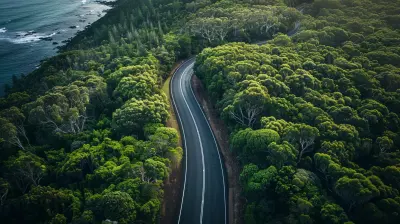Basecamp Bliss: How to Set Up the Perfect Mountain Campsite
17 August 2025
There’s something magical about camping in the mountains—crisp air, stunning views, and the sweet sound of nature all around. But let’s be real: if you don’t set up your campsite properly, that dream adventure can turn into a nightmare full of windblown tents, soggy sleeping bags, and less-than-ideal bathroom situations.
So, how do you set up the perfect mountain campsite? Buckle up, fellow adventurer, because we’re about to break it down step by step! 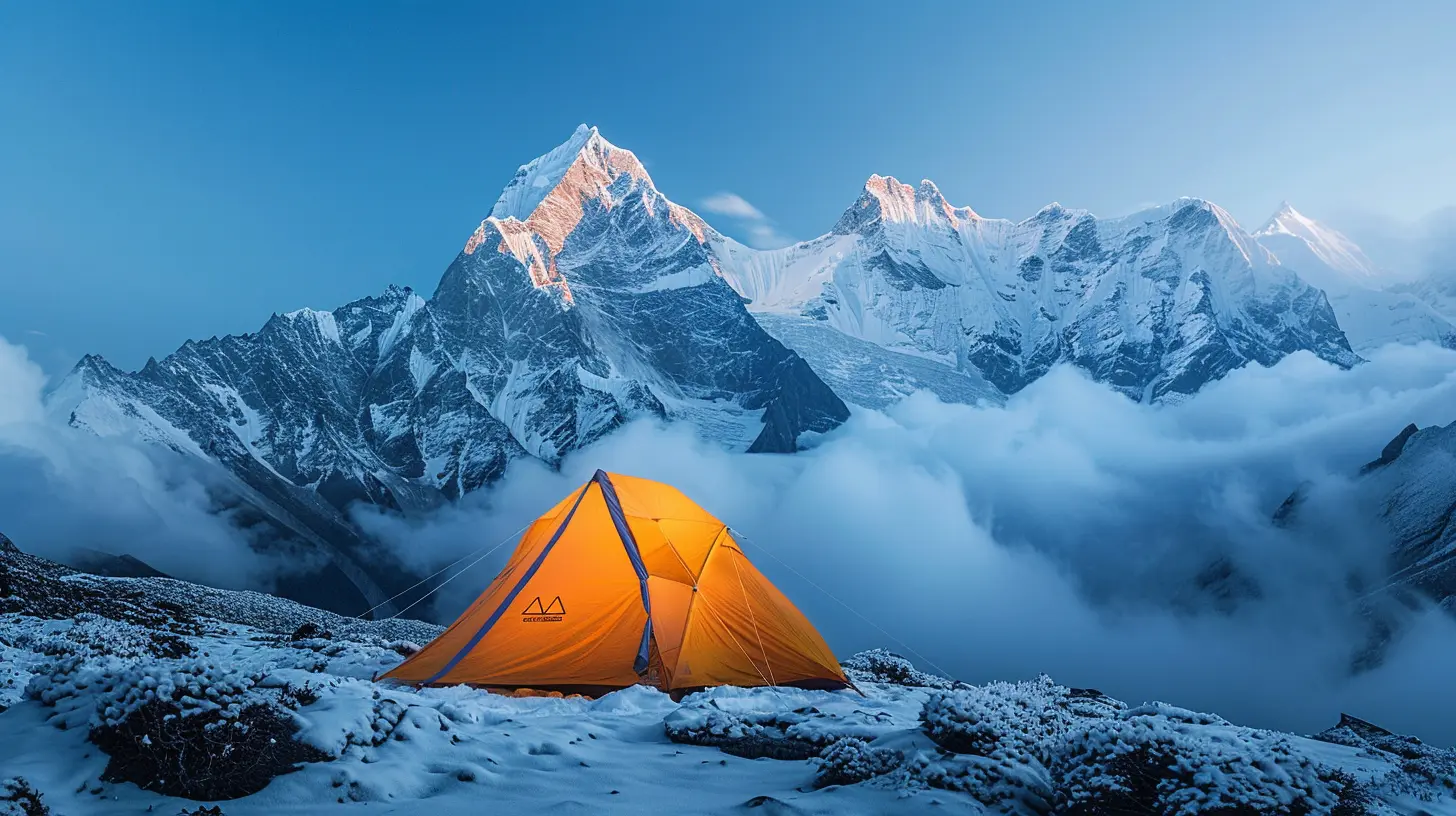
1. Choosing the Perfect Campsite: Location is Everything
You wouldn’t build a house on a floodplain, right? The same logic applies to mountain camping. Here’s what to keep in mind when picking your spot:Look for Flat Terrain
Sleeping on a slant? Bad idea. You’ll either roll to one side of your tent all night or wake up with a pounding headache. Find a flat spot where your tent can sit level—bonus points if it’s on soft ground for extra comfort.Stay Away from Valleys and Gullies
Valleys might offer shelter from the wind, but they also collect cold air and moisture. Plus, if it rains, you don’t want to wake up in the middle of a newly formed river.Mind the Wind
The higher up you go, the stronger the winds get. Set up your tent behind natural windbreaks like boulders, trees, or hills to keep those gusts from turning your tent into a kite.Distance from Water Sources
Sure, camping next to a lake or river sounds amazing, but being too close can be risky. Flash floods, bugs, and animal activity (hello, thirsty bears) make setting up at least 200 feet away a safer bet.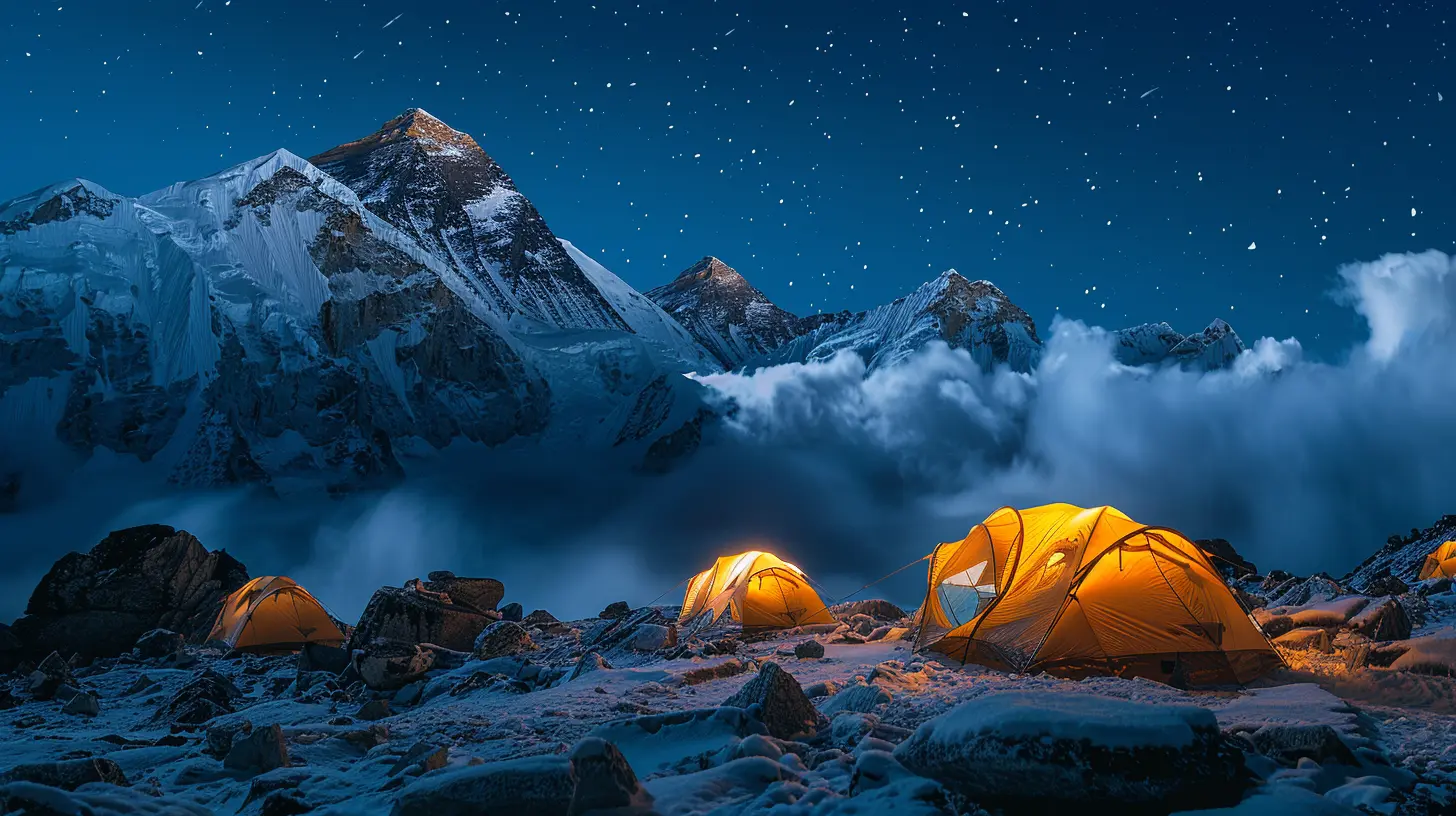
2. Tent Setup: Your Mountain Home Away from Home
Now that you've found your spot, it’s time to set up your tent like a pro.Use a Footprint or Tarp
A tarp under your tent acts as a barrier between you and the cold, damp ground. It also protects the bottom of your tent from wear and tear. Just make sure the tarp is slightly smaller than your tent’s base—otherwise, water can pool and seep in.Stake It Down Tight
Mountain winds don’t play around. Secure your tent stakes deep into the ground and use guylines to strengthen the structure. If the ground is too hard, use rocks to weigh down the stakes.Position the Tent Entrance Wisely
Avoid facing your entrance directly into the wind. Instead, angle it slightly to block strong gusts while still allowing airflow.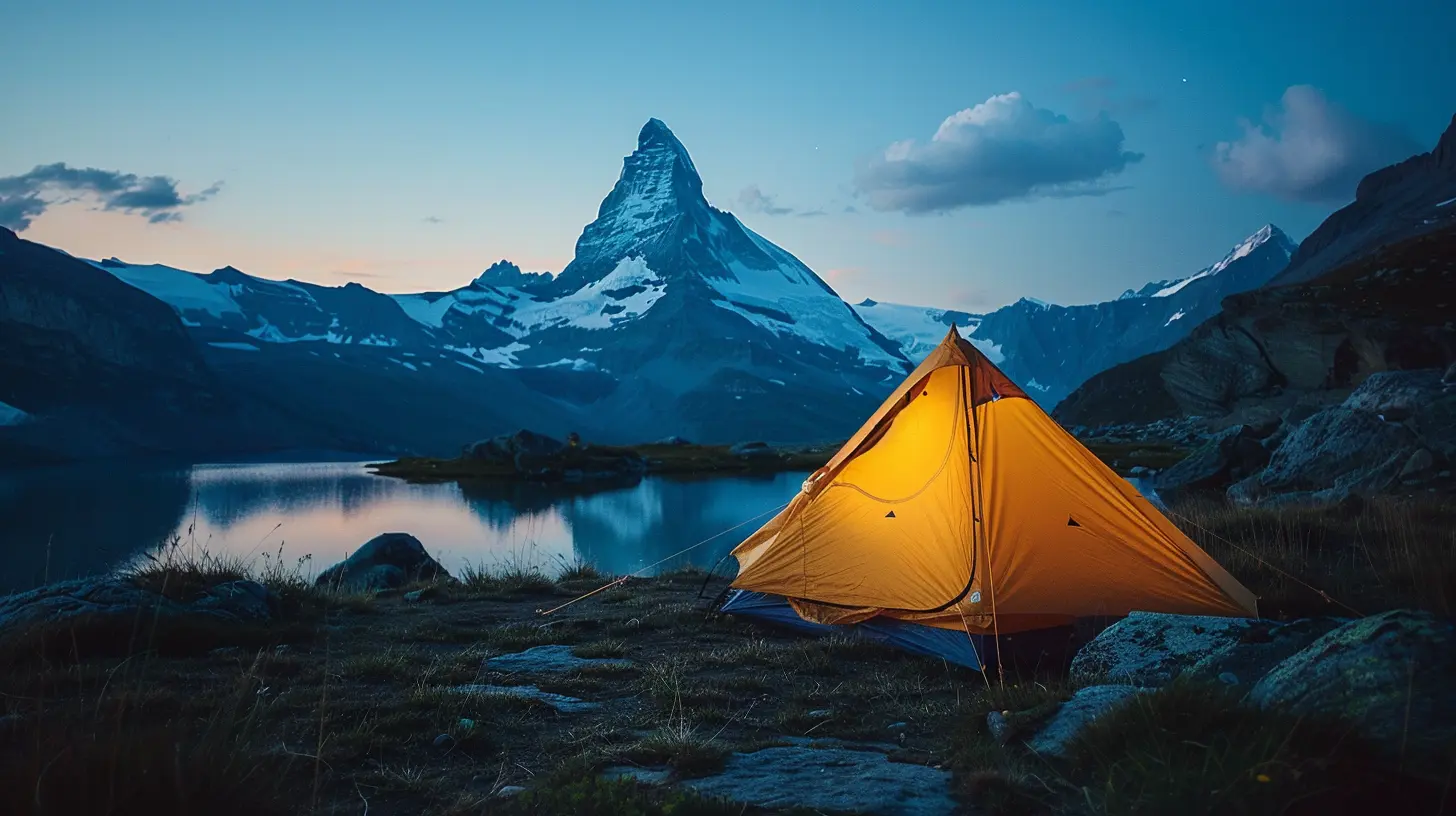
3. Campfire Comfort: Staying Warm Without a Hitch
What’s a campsite without a proper fire? Here's how to build a mountain-friendly fire safely and efficiently.Use an Existing Fire Ring
If there’s already a fire ring at your site, use it! This reduces environmental impact and keeps the fire contained. If there’s no fire ring, build one using rocks in a clear, open area away from dry brush.Follow the ‘Teepee’ or ‘Log Cabin’ Fire Structure
These two classic fire structures work best for airflow and steady burns. The "teepee" method is great for quick burning and warmth, while the "log cabin" method provides a longer, even burn.Always Have Water and Dirt Handy
Before you even strike a match, have water or dirt nearby to fully extinguish the fire when you’re done. Nobody wants to be responsible for a wildfire.Pro Tip: If fires aren’t allowed (or you just don’t feel like messing with one), a small camping stove is a lifesaver for cooking and warmth. 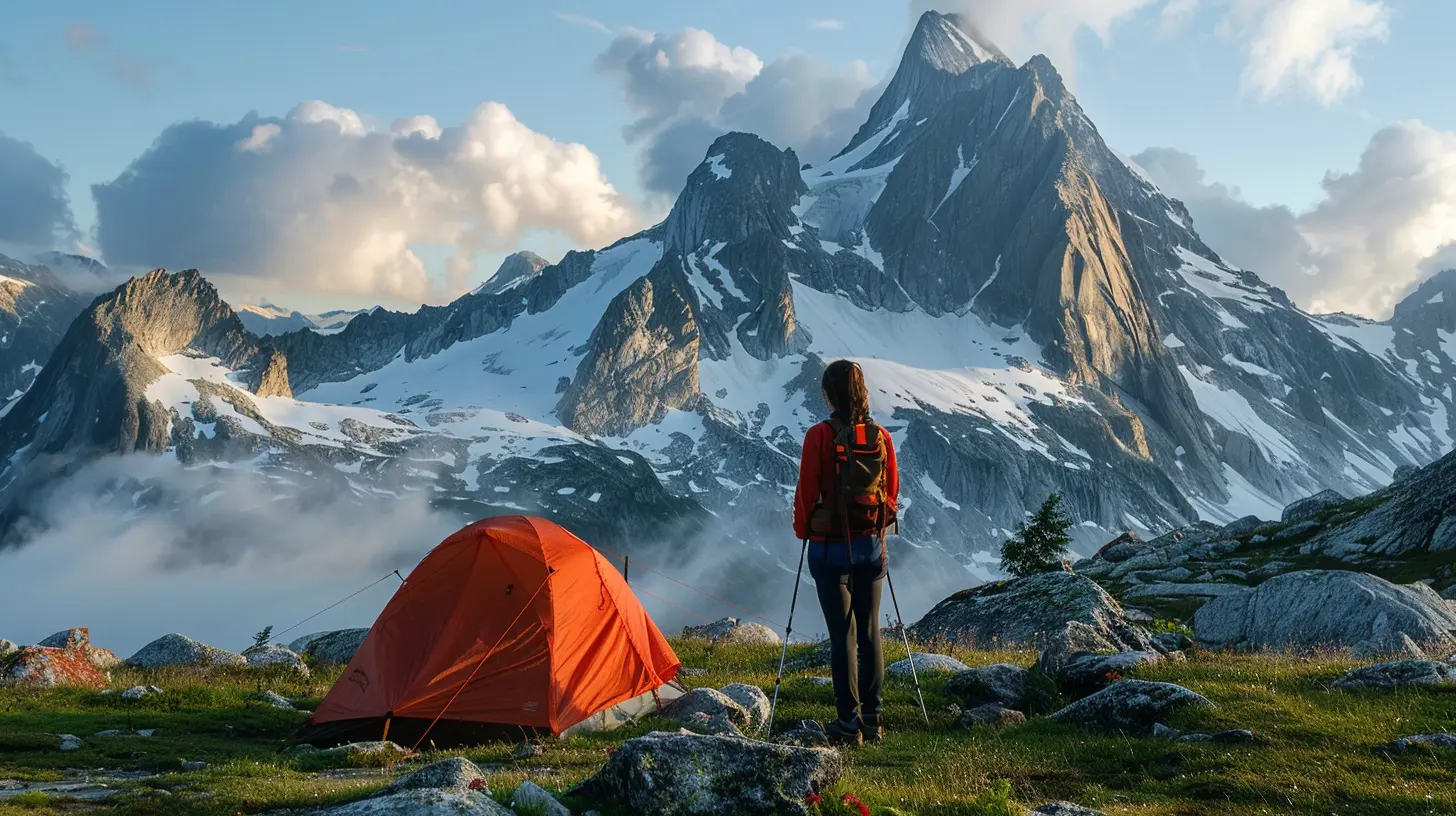
4. Sleeping Like a Mountain King (or Queen)
A bad night’s sleep in the mountains? No thanks. Here’s how to stay cozy and comfortable.Invest in an Insulated Sleeping Pad
A sleeping pad isn’t just for comfort—it insulates you from the cold ground. Trust me, skipping this step could mean losing precious body heat.Layer Up Your Sleeping Bag Game
A good sleeping bag rated for cold temperatures is key. If you’re expecting extra chilly weather, throw in a liner for added warmth.Wear Dry, Warm Clothes to Bed
Ditch the sweaty hiking clothes before crawling into your sleeping bag. Changing into dry base layers keeps you warm and prevents moisture buildup inside your bag.Bonus Hack: Stick a warm water bottle inside your sleeping bag before bed—it’ll keep you toasty all night!
5. Food Storage: Keeping Bears and Critters at Bay
Wild animals have an incredible sense of smell, and trust me, you don’t want a surprise visit from a bear.Use Bear-Resistant Containers or Bags
If camping in bear country, store all food, trash, and scented items in designated bear-proof containers. If that’s not an option, hang your food from a tree at least 10 feet off the ground and 4 feet away from the trunk.Cook Away from Your Sleeping Area
Set up your cooking area at least 100 feet downwind from your sleeping spot. This reduces the chances of animals sniffing around your tent at night.Dispose of Waste Properly
Pack out all food scraps and garbage. If you must bury biodegradable waste, dig at least six inches deep and keep it away from water sources.6. Staying Safe in the Mountains
Safety first! The mountains can be unpredictable, so it’s always best to be prepared.Check the Weather Forecast
Mountains have their own mood swings when it comes to the weather. Always check the forecast before heading out and be prepared for sudden changes.Bring a First Aid Kit
Blisters, scrapes, and altitude sickness can ruin a trip fast. A well-stocked first aid kit including bandages, pain relievers, and altitude sickness meds is a must.Know the Altitude Effects
Higher elevations mean thinner air, which can lead to altitude sickness. Stay hydrated, ascend gradually, and if you feel dizzy or nauseous, take a break (or descend if necessary).Navigation Tools are a Must
Phone GPS can be unreliable in the mountains. Bring a paper map and compass, or at least a reliable GPS device with offline maps.7. Leave No Trace: Respect the Wilderness
Nature gives us breathtaking campsites—let’s keep them that way! Here’s how to camp responsibly:- Pack it in, pack it out: Take all trash, leftover food, and personal belongings with you.
- Stick to established trails: Avoid trampling delicate vegetation.
- Respect wildlife: Admire animals from a distance—don’t feed them or interfere with their habitats.
- Keep noise to a minimum: Let nature’s sounds be the dominant soundtrack of your adventure.
The mountains are meant to be enjoyed by everyone, so let’s do our part to keep them pristine for future adventurers!
Final Thoughts: Your Mountain Sanctuary Awaits!
Setting up the perfect mountain campsite isn’t rocket science, but it does take some thought and preparation. From choosing the right spot to staying warm and cooking smart, these tips will have you camping like a pro in no time.So, grab your gear, hit the trails, and soak in the beauty of the great outdoors—it’s time for some basecamp bliss!
all images in this post were generated using AI tools
Category:
Mountain AdventuresAuthor:

Winona Newman
Discussion
rate this article
2 comments
Coral Griffin
Nature's embrace teaches us simplicity; in stillness, we find our true selves.
November 10, 2025 at 4:38 AM
Lana McGuffey
This article beautifully captures the essence of mountain camping. Your tips on creating a cozy and inviting basecamp truly inspire a deeper connection with nature. Thank you for sharing such valuable insights!
August 17, 2025 at 4:14 PM

Winona Newman
Thank you so much for your kind words! I'm glad you found the tips inspiring. Happy camping!


